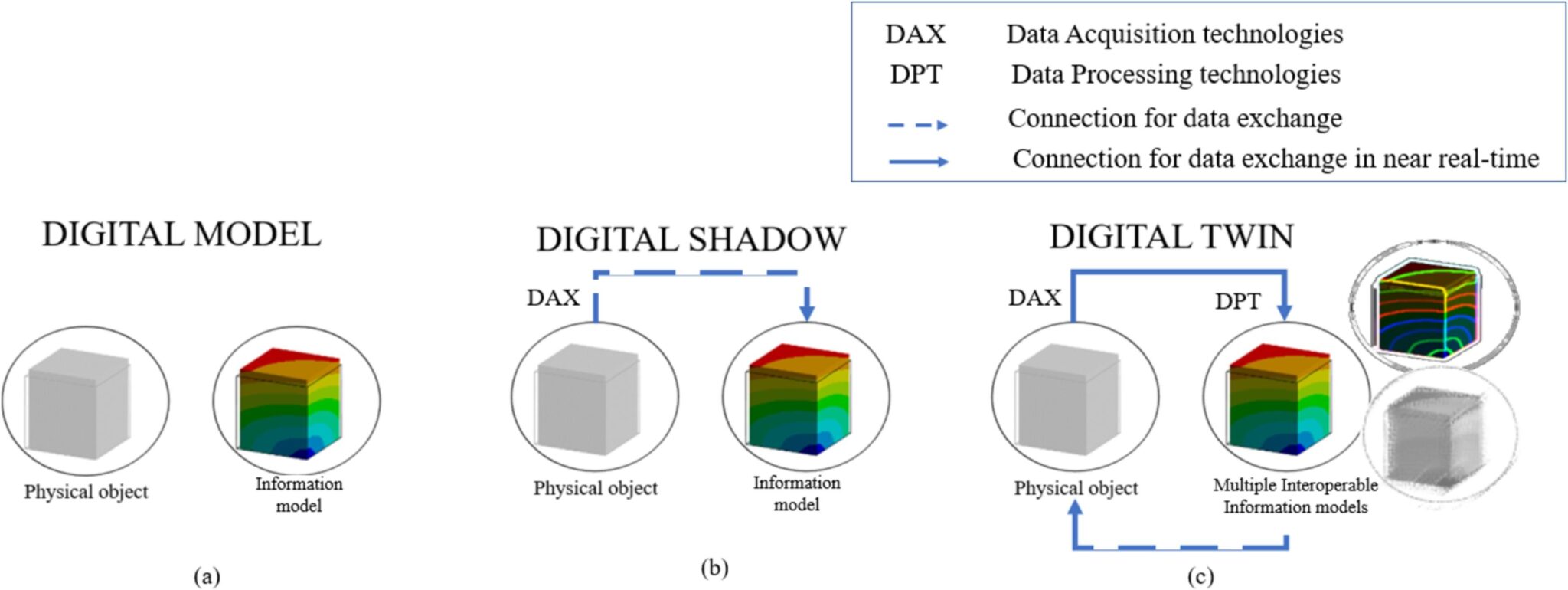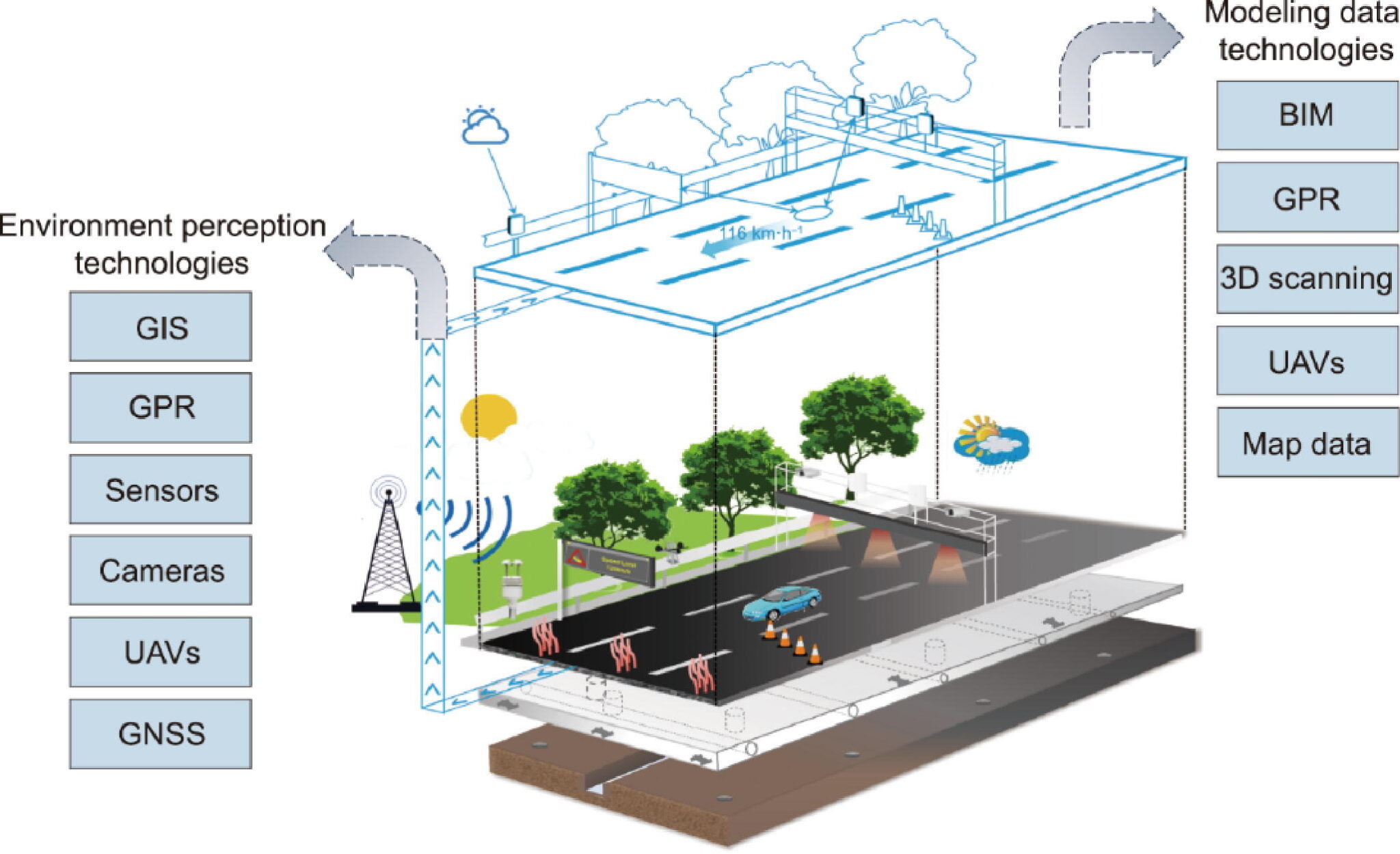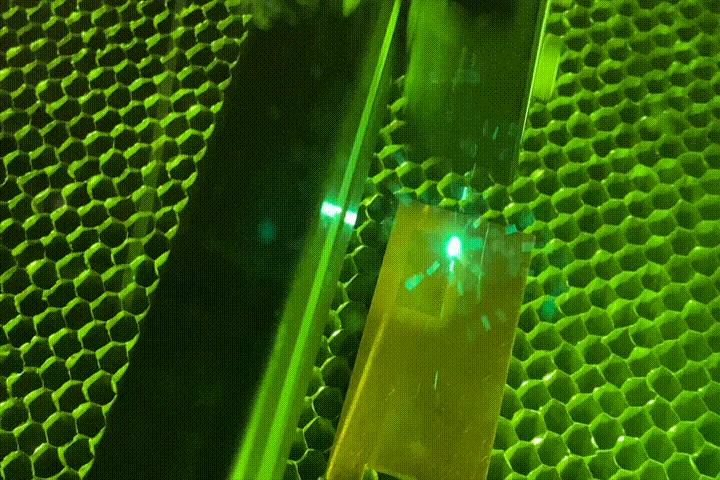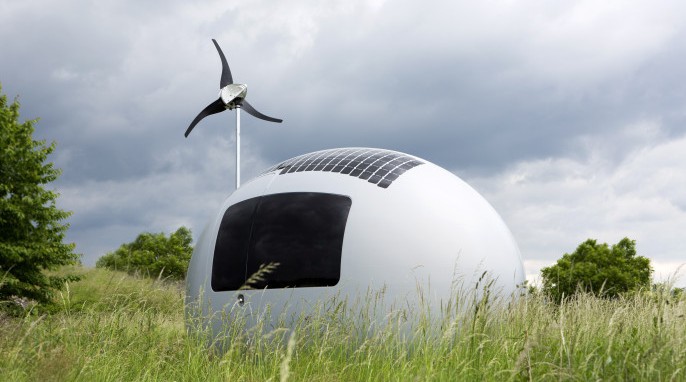Digital twins have potential for growth in engineering. Get to know one of the most futuristic technologies of the 21st century.
By Reshmi Thampy
During COVID-19, engineers faced an unexpected problem—the inability to conduct frequent site visits. This problem was solved by using Building Information Modelling (BIM). Multiple images of the structure, say a dam, are captured using unmanned aerial vehicles (UAVs) or drones. These images combined with a technique called photogrammetry are used to create a 3D model of the dam. This 3D model can then be accessed in the comfort of one’s home, without worrying about a missed measurement. Engineers can measure the length of a crack, know whether it compromises structural integrity or not, and collaborate with other engineers better.
But what if the dam could be monitored 24/7, with sensors collecting data and relaying the information? What if the dam itself could say that a crack has occurred and that human intervention is required?
A “digital twin” is not a new concept—it was introduced back in 2001 by Dr. Michael Grieves. It is, as the name suggests, a digital counterpart of a physical entity, updated in real time, with multiple functionalities. And it is a crucial technology for monitoring systems that require frequent inspections and upkeep that are difficult for humans to do. Unsurprisingly, NASA was the first to give birth to the concept of digital shadow, in the 1960s as a “living model” for the Apollo space mission. This technology would later give rise to digital twins (DTs).

Sensing the future
Digital twins as a technology does not simply mirror a structure or an aircraft engine and send alerts. DTs allow for a bidirectional flow of information or even a remote control of its operations. It can also simulate what-if scenarios and offer predictive maintenance—a DT of your car might tell you to change the air compressor or it might decrease the car’s lifespan by specific years by analyzing historical data and running simulations.
DTs are being considered in various other industries: Your body is a machine too; what if a digital twin could tell you what is causing your headache or the effectiveness of a drug? Some researchers are more ambitious—what if we could create a DT of the Earth? Including the humans in it? It’d make climate change and forecasting much simpler.
A virtual revolution
In the construction sector, DTs can help from the very start—the planning and design stage to demolition and reconstruction—allowing optimal resource use and a comprehensive cradle-to-grave life-cycle analysis. One structure that asks for frequent maintenance is roads. Pavements traverse diverse terrains, are subject to harsh environments, and experience repeated, dynamic loads that cause fatigue. Research by Yu Yan and a team of fellow scholars from Tongji University and Harbin Institute sheds light on the obstacles that DTs face in road engineering and future efforts.
Food for digital twins
But first, what enables digital twins? It would of course start with lots of data. To build a road, you would first ask for a map of the place. Then, a reconnaissance survey is conducted to understand the terrain better. Have drones take some aerial photography. Use Global Navigation Satellite System (GNSS) and geographical information system (GIS) for multiple layers of spatial data: street data, building data, and vegetation data. Analyze soil samples and find compaction characteristics, permeability, and more. Using these and historical data collected from existing pavements, a DT can propose route plans, provide geometric designs of highways, optimize the construction sequence, allow for intelligent compaction, and help with budgeting. BIM can determine potential conflict points with existing infrastructure.
RELATED: ChatGPT Chemistry Assistant Speeds Up Data Work
Digital twins at each stage of construction
In the construction and completion phase, digital twins can be used for resource allocation, project management, and quality assurance. Sensors like weigh-in-motion and tire pressure sensors are embedded in the pavement to collect traffic data. Sensors for crack detection to create self-sensing asphalt pavements have also been considered. But know that these can only collect data from a point. Intelligent systems are needed to interpolate the data between two sensors. Other crack detection methods include photography, GPR, and 3D scanning. GPR is like an X-ray for roads—a non-destructive test that utilizes electromagnetic waves to capture internal pavement distress. And then 3D scans show surface-level distresses.
In the operations and maintenance phase, DTs help with structural health monitoring and maintenance-related decision-making. DTs can accurately quantify the carbon emissions during pavement construction and operation, and determine the carbon footprint—a technology gaining much importance in today’s challenge to attain carbon neutrality.
In the demolition and reconstruction phase, DTs can help provide information about the accessibility of the proposed site using BIM. It can also help visualize construction logistics, without needing additional site surveys. Combined with augmented reality, a DT can use immersion to offer a real-time digital site visit to engineers. However, how DTs can help during the demolition of roads is a research gap yet to be addressed, since much data is lost during demolition.

Road blocks
So, we come to our question: What is stopping the building of digital cities? From the above information, you might understand that implementing DTs would require lots of money. The initial investment needed for data storage and upkeep is high. Also, there is a concern about data privacy and cybersecurity, which might reduce trust among stakeholders. DTs would also require real-time interoperability and data fusion across many devices and systems—BIM, IoT, AI models, sensors, GIS, etc., which is difficult to achieve. More efforts are required to integrate surface and internal models.
Another problem is the lack of a standard for integrating DTs across various infrastructures. One of the main goals that a DT should achieve is life-cycle analysis. However, its application in the demolition stage is limited currently.
RELATED: Does Old Concrete Get Recycled?
The road ahead for DTs
With the AI and machine learning revolution afoot, DTs are poised for wide-scale adoption across multiple sectors. However, DTs will require much more ground data when it gets implemented in the construction sector. A novel method Yan’s team discussed in their research was to collect data from the smartphones placed in the backpacks of cyclists. With drones taking up delivery agent roles, this might be the next favorite part-time job for travel enthusiasts.
DTs can be the next crucial step in advancing smart cities and automated driving—after all, smart vehicles need smart roads.
This study was published in the peer-reviewed journal Engineering.
References
Yan, Y., Ni, L., Sun, L., Wang, Y., & Zhou, J. (2025). Digital twin enabling technologies for advancing road engineering and lifecycle applications. Engineering, 44, 184–206. https://doi.org/10.1016/j.eng.2024.12.017
Babanagar, N., Sheil, B., Ninić, J., Zhang, Q., & Hardy, S. (2025). Digital twins for urban underground space. Tunnelling and Underground Space Technology, 55(1), 106140. https://doi.org/10.1016/j.tust.2024.106140.
Keen, M. (2025, January 27). What is a Digital Twin? [Video]. IBM Technology. https://www.youtube.com/watch?v=2hnoGo27uf8&ab_channel=IBMTechnology
Parris, C. J. (2016, November 18). Minds + Machines: Meet A Digital Twin [Video]. GE Digital. https://www.youtube.com/watch?v=2dCz3oL2rTw&ab_channel=GEDigital
Langley Research Center. (2021, November 1). Digital Twins and Living Models at NASA. https://ntrs.nasa.gov/citations/20210023699
Featured image by Mohd Afiq on Unsplash.
About the Author
Reshmi Thampy is a postgraduate in structural and construction engineering. She loves all things green and would have been a farmer in a parallel universe. In this one, she is an avid reader and an occasional writer. She loves reading about new advances in science and technology and views the field of science journalism as an exciting one where she can share her curiosity with others.




